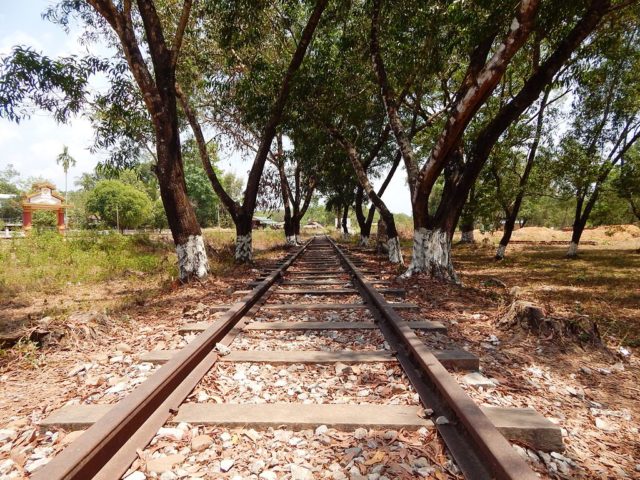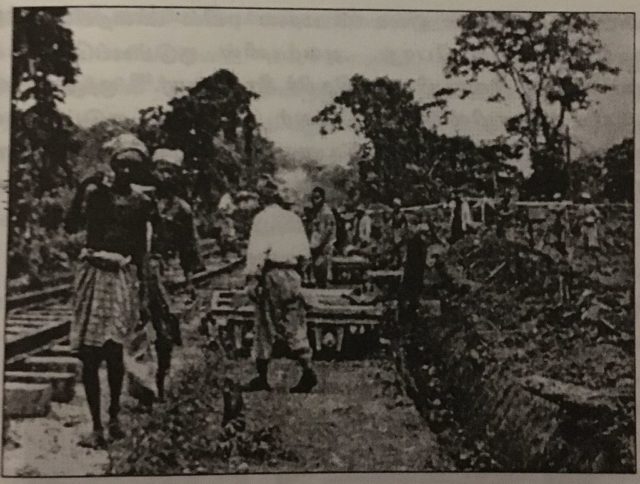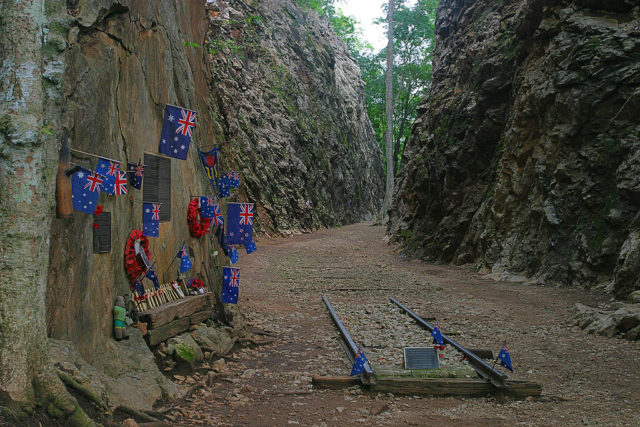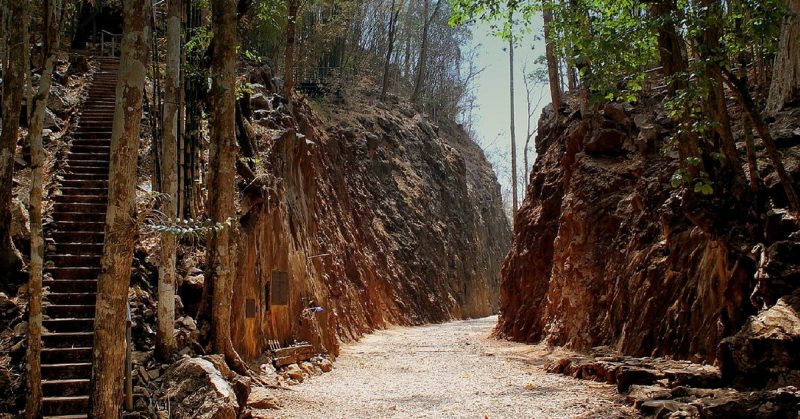The Death Railway is only one of the names describing the Japanese project built in 1943 to provide support to its forces during World War II. The railway connected Thailand and Burma and was shut down in 1947, after the war.
The construction of the railway is a heartbreaking story of forced labor, with more than 60,000 Allied prisoners of war working on the project. Local citizens were also compelled to work alongside the prisoners.
The death toll includes almost 7,000 British soldiers; close to 3,000 Australian soldiers; nearly 3,000 Dutch soldiers; and more than 100 Americans soldiers.
When the war ended, 111 Japanese military officials were tried in court for war crimes in connection with the Death Railway. 32 of these officials received a death sentence.
A Need For Reliable Transportation
Such a railway had been desired by the British government in Burma in the mid-19th century. However, it would have been an incredibly tough undertaking due to the hilly jungle terrain – too difficult to even consider.
In 1942, the Japanese seized Burma and took control away from Britain. At this point, the Japanese relied on sea transportation to provide supplies for troops stationed there. However, this left Japanese ships susceptible to Allied attacks. So, the Japanese started a rail project.
To start, the Japanese would need laborers. They sourced these laborers from prisoner of war camps already established in Singapore and other locations in Southeast Asia.
The railway was to connect existing rail lines in both Thailand and Burma and began in the fall of 1942. The goal for completion was December 1943, but due to grueling schedules resulted in an early finish in October 1943.

A Modern Marvel
Despite the horrors associated with the building of the Death Railway, engineers have marveled at it as an accomplishment.
With more than 25,000,000 people, the railway traversed more than 250 miles, including more than 600 bridges. This is especially impressive given the hard working conditions – no transportation between the workers and the outside world, no medical help, no food and no advanced tools. However, after completion of the railway, the Japanese only used it to ship about 500,000 tons and two army divisions.
Non-Prisoners of War On Site
During construction, 12,000 Japanese and Korean soldiers worked as prisoner supervisors, engineers, and guards. They received much better treatment and living conditions than the prisoners, of course, but still about a thousand died. They were known for their extreme cruelty: from violence and torture to humiliation.

In addition to the prisoners of war, about 180,000 Southeast Asian natives were forced into work. However, the Burmese and Thai workers coerced into the job were not enough. The Japanese advertised offering great jobs for those in the East Indies, Malaya, and Singapore. They promised good wages, family housing and more.
This brought in a few extra workers, who were imprisoned upon arrival but the Japanese still needed to round up unwilling workers from nearby villages. Working conditions for some of these groups were even more horrific than those the prisoners of war faced, with an average of 20 deaths per day.
Prisoners of War
The first prisoners of war to arrive on the construction site were the Australians, a few thousand of them. They left prison in Changi and were shipped to Burma. Until railroad construction began, they were tasked with constructing airfields. At around the same time, British prisoners of war were sent to Thailand. As work continued, prisoners were shipped in from various surrounding camps as needed.
About every 10 miles along the railway, temporary camps were established. Prisoners would move from camp to camp as they worked, more than a thousand at a time. They were made of bamboo poles with thatched roofs, and no walls. Sleeping platforms were slightly raised above dirt floors. Each prisoner had a two-foot space in which to sleep.
The prisoners faced not only jungle diseases and mistreatment at the hands of their guards but also starvation. Many survived as best they could.
Imprisoned artists used human hair brushes, blood for paint and toilet paper canvases to record their daily life. Some of this art was later used in war trials. Writers went on to publish detailed works regarding their experiences on the railroad, including Railroad of Death by John Coast.

One of the most difficult sections of the railway was Hellfire Pass. It was a tough portion of the line to construct, as it required large rock cuttings, which were extremely strenuous. The prisoners of war suffered greatly at the hands of the guards for not cutting the rock quickly or well enough. This part alone took about 12 weeks.
Here, many who were not beaten to death by the guards died from disease (mainly cholera and dysentery), exhaustion or starvation.
After The War
After completion of the Death Railway, prisoners would face another two agonizing years before being liberated. During this time some received medical treatment, but others were dispatched to different camps, where they worked as maintenance crews. Still, others were left behind to maintain the line, where they continued to suffer from the poor living conditions and later Allied bombings.
At the end of the war, mortality rates for the railway project were tallied. This toll found the British prisoners had a death rate of 23 percent; the Australians 22 percent; the Americans 19 percent and the Dutch 15 percent.
That the Dutch prisoners experienced a lower death rate is attributed to the fact that many of them were born in the Dutch East Indies. They were, therefore, more accustomed to the tropical climate and diseases found there.
The remains of most of the war dead were retrieved and transplanted to official war cemeteries.
